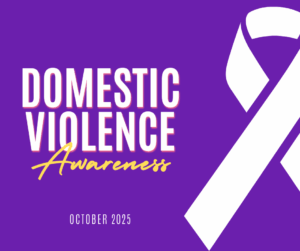 Every October, communities across the country recognize Domestic Violence Awareness Month, a time dedicated to supporting survivors, educating the public, and advocating for safer homes and relationships.
Every October, communities across the country recognize Domestic Violence Awareness Month, a time dedicated to supporting survivors, educating the public, and advocating for safer homes and relationships.
At Mendes Law, PC, a trusted San Francisco Bay Area family law firm, we believe awareness is the first step toward protection. Understanding how California defines domestic violence and what legally counts as abuse empowers victims to take action and seek help.
How California Law Defines Domestic Violence
Under California Family Code §6203, domestic violence is broadly defined as any form of abuse committed against someone with whom the abuser has a close relationship, including a spouse, former partner, cohabitant, relative, or co-parent.
Importantly, abuse under California law isn’t limited to physical harm. The law recognizes that emotional, psychological, and financial abuse can be equally destructive.
Abuse may include:
• Intentionally or recklessly causing or attempting to cause bodily injury
• Sexual assault
• Placing someone in reasonable fear of serious harm
• Harassing, threatening, stalking, or destroying personal property
This wide definition ensures victims of all types of abuse can access legal protections, not only those experiencing physical violence.
Types of Abuse Recognized Under California Law
1. Physical Abuse
Physical abuse includes any act that causes bodily injury or physical harm. Examples include hitting, kicking, choking, pushing, or using weapons. But California law also recognizes less obvious behaviors such as:
• Preventing someone from leaving a room or home
• Throwing objects or damaging property to intimidate
• Withholding necessary medication or medical care
Even a single instance of physical harm or threat of harm can justify a court-issued restraining order.
2. Emotional and Psychological Abuse
Emotional abuse doesn’t leave visible marks, but it can severely impact a victim’s mental health and sense of safety. Courts in California view behavior meant to control, isolate, or degrade a partner as abusive.
Examples include:
• Humiliation, insults, or constant criticism
• Threats against loved ones or pets
• Isolating someone from friends, work, or family
• Monitoring phone calls or social media
• Using intimidation or manipulation to control behavior
Recognizing emotional abuse early can help victims seek legal and emotional support before it escalates.
3. Financial or Economic Abuse
Financial abuse is one of the most common—and least recognized—forms of domestic violence. It occurs when an abuser uses money or resources to exert power and control.
This may include:
• Restricting access to bank accounts or credit cards
• Taking a partner’s paycheck or savings
• Preventing a partner from working or attending school
• Running up debt in someone else’s name
• Withholding basic financial support
Because financial dependence often prevents victims from leaving, California courts can include financial protections in restraining orders, such as temporary support payments.
Legal Protections for Victims in California
1. Domestic Violence Restraining Orders (DVRO)
A Domestic Violence Restraining Order (DVRO) can provide immediate and long-term protection. A DVRO may:
• Prohibit contact or communication with the victim
• Require the abuser to move out of the shared home
• Grant temporary custody or visitation terms for children
• Include financial support for housing or bills
Emergency restraining orders can be issued the same day, and temporary orders can extend until a full court hearing.
2. Criminal Penalties
Under California Penal Code §273.5, inflicting corporal injury on a spouse or cohabitant is a criminal offense. Depending on the circumstances, penalties can include jail time, fines, probation, and mandatory counseling programs.
These laws reflect the state’s commitment to protecting survivors and holding offenders accountable.
3. Child Custody and Family Court Considerations
Domestic violence can have a significant impact on custody and visitation rights. California courts place child safety above all else. If a parent has committed domestic violence within the past five years, judges are required to consider that history before granting custody. Supervised visitation or other safeguards may be ordered to ensure the child’s wellbeing.
What to Do If You Are Experiencing Abuse
If you or someone you know is experiencing domestic violence, help is available. You do not have to face it alone.
Steps to take:
1. Call 911 if you are in immediate danger.
2. Document any evidence of abuse: texts, photos, medical records, or witness statements.
3. Speak with a trusted family law attorney to understand your rights.
4. Reach out to a local support organization for confidential help.
Bay Area Domestic Violence Resources
- National Domestic Violence Hotline: 1-800-799-SAFE (7233)
- Contra Costa County STAND! For Families Free of Violence: www.standffov.org
- Alameda County Family Justice Center: www.acfjc.org
- Bay Area Women Against Rape: www.bawar.org
These organizations offer shelter, legal advocacy, counseling, and 24-hour hotlines.
Mendes Law, PC: Advocating for Victims Across the San Francisco Bay Area
During Domestic Violence Awareness Month and every month of the year Mendes Law, PC stands with survivors. Our attorneys provide compassionate, confidential legal guidance to help victims find safety, obtain restraining orders, and protect their families.
Whether you need immediate protection or long-term legal support, we are here to help you take back control of your life.
Serving: Walnut Creek, Contra Costa County, Alameda County, and the greater San Francisco Bay Area
Contact Mendes Law, PC today to schedule a confidential consultation.
